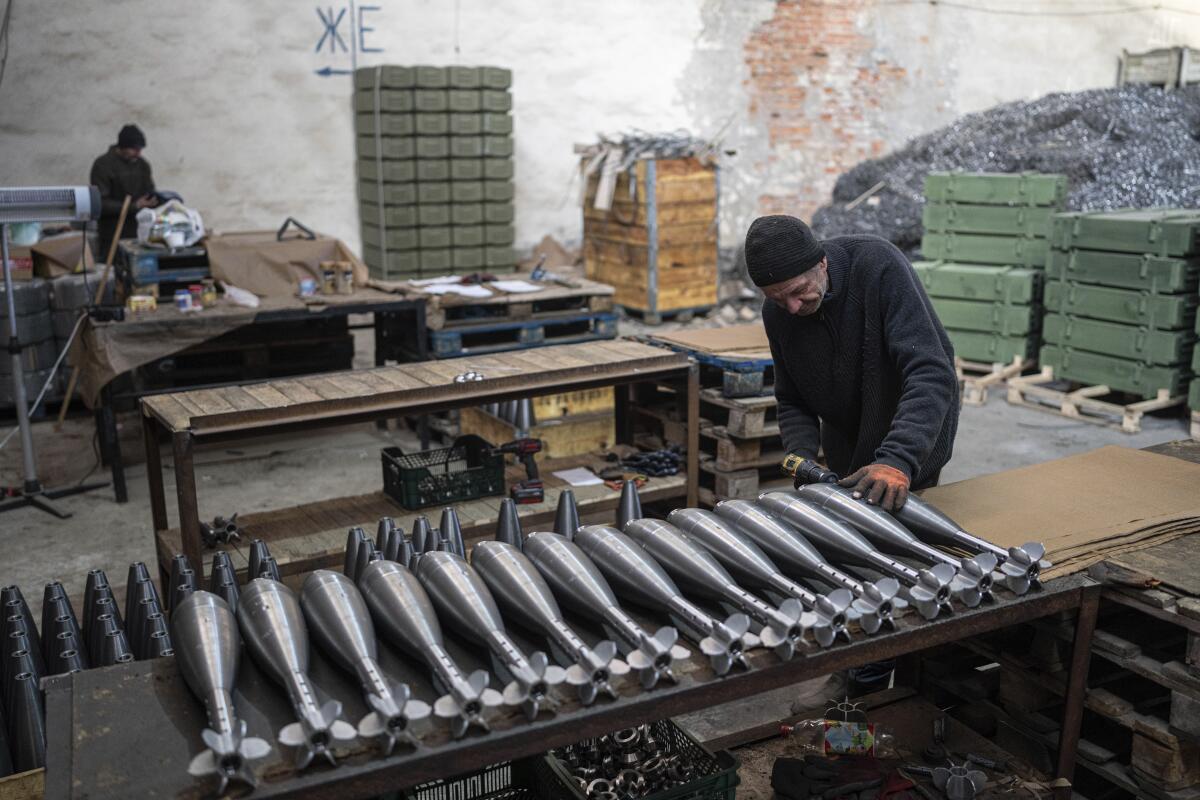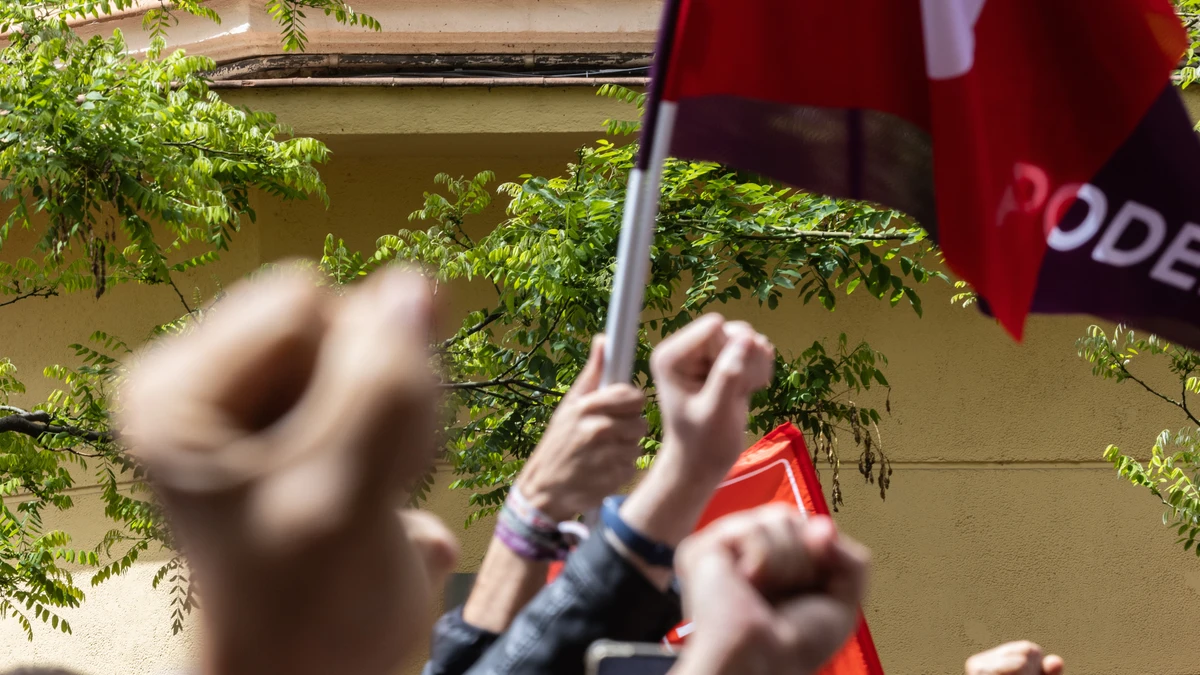Ukraine ramps up spending on homemade weapons to help repel Russia
Ukraine
HANNA ARHIROVA March 27, 2024
Ukraine needs any edge it can get to repel Russia from its territory. One emerging bright spot is its small but fast-growing defense industry, which the government is flooding with money in hopes that a surge of homemade weapons and ammunition can help turn the tide.
The effort ramped up sharply over the
l
ast year as the U.S. and Europe strained to deliver weapons and other aid to Ukraine, which is up against a much bigger Russian military backed by a thriving domestic defense industry.
The Ukrainian government budgeted nearly $1.4 billion in 2024 to buy and develop weapons at home 20 times more than before Russia’s full-scale invasion.
And in another major shift, a huge portion of weapons are now being bought from privately owned factories. They are sprouting up across the country and rapidly taking over an industry that had been dominated by state-owned companies.
Islamic State claimed the Moscow attack. Why is Putin accusing Ukraine and the West?
A privately owned mortar factory that launched in western Ukraine last year is making roughly 20,000 shells a month. I feel that we are bringing our country closer to victory, said Anatolli Kuzmin, the factorys 64-year-old owner, who used to make farm equipment and fled his home in southern Ukraine after Russia invaded in 2022.
Yet like many aspects of Ukraine’s war apparatus, its defense sector has been constrained by a lack of money and manpower and, according to executives and generals, too much government red tape. A more robust private sector could help root out inefficiencies and enable factories to churn out weapons and ammunition even faster.
The stakes couldn’t be higher.
Russia controls nearly a quarter of Ukraine and has gained momentum along the
1,000 kilometer (
620
–
mile
)
front line by showing a willingness to expend large numbers of troops to make even the smallest of advances. Ukrainian troops regularly find themselves outmanned and outgunned, and this has contributed to falling morale.
You need a mortar not in three years, you need it now, preferably yesterday, said Taras Chmut, director of the Come Back Alive Foundation, an organization that has raised more than $260 million over the
last
decade to equip Ukrainian troops with machine guns, armored vehicles and more.
European Union pushes ahead with a plan to buy weapons for Ukraine with frozen Russian asset profits
Kuzmin, the owner of the mortar factory, fled the southern city of Melitopol in 2022 after Russia invaded and seized his factory that mostly made spare parts for farm equipment. He had begun developing a prototype for mortar shells shortly after Russia invaded Ukraine in 2014, when it illegally annexed the Crimean Peninsula.
Kuzmin took over a sprawling warehouse in western Ukraine last winter. His long-term goals include boosting production to 100,000 shells per month and developing engines and explosives for drones.
He is just one of many entrepreneurs transforming Ukraine’s weapons industry, which was dominated by state-owned enterprises after the break
–
up of the Soviet Union. Today, about 80
%percent
of the defense industry is in private hands a mirror image of where things stood a year ago and a stark contrast with Russia’s state-controlled defense industry.
Each newly made projectile is wrapped in craft paper and carefully packed into wooden crates to be shipped to Romania or Bulgaria, where
they
are loaded with explosives. Several weeks later, theyre shipped back and sent to the front.
Our dream is to establish a plant for explosives, said Kuzmin, who is seeking a partner to make that happen.
Ukraine’s surge in military spending has occurred against a backdrop of $60 billion in U.S. aid being held up by Congress and with European countries struggling to deliver enough ammunition.
Pentagon to give Ukraine $300 million in weapons
As impressive as Ukraine’s defense sector transformation has been, the country stands no chance of defeating Russia without massive support from the West, said Trevor Taylor, a research fellow at the Royal United Services Institute, a London-based think tank.
Ukraine is not capable of producing all the munitions that it needs for this fight, Taylor said. The
holdup
of $60 billion of American help is really proving to be a significant hindrance.
Russia is also pumping more money into its defense industry, whose growth has helped buffer its economy from the full brunt of Western sanctions. The country’s defense minister, Sergei Shoigu, recently boasted of huge increases in the manufacture of tanks, drones and ammunition.
The entire country has risen and is working for our victory, he said.
Compared with last year, Ukraine’s output of mortar shells is about 40 times higher and its production of ammunition for artillery has nearly tripled, said Oleksandr Kamyshin, Ukraine’s minister of strategic industries. There has also been a boom in drone startups, with the government committing roughly $1 billion on the technology on top of its defense budget.
We now produce in a month what we used to produce in a year, said Vladislav Belbas, the director general of Ukrainian Armor, which makes a wide array of military vehicles.
Zelensky says Russia can be stopped but Ukraine badly needs more air defense systems
For the Ukrainian army’s 28th brigade, which is fighting near Bakhmut, delays in foreign weapon supplies haven’t yet posed any problems for troops “because we are able to cover our need from our own domestic production, said
Major Maj.
Artem Kholodkevych.
Still, domestic weapons factories face a range of challenges from keeping up with changing needs of battlefield commanders, to their own vulnerability to long-range Russian missile strikes.
But perhaps the greatest immediate hindrance is a lack of manpower.
Yaroslav Dzera, who manages one of Ukrainian Armor’s factories, said he struggles to recruit and keep qualified workers, not least because many of them have been mobilized to fight.
Weapons companies say another roadblock to growth is bureaucracy.
The government has tried to become more efficient since the war began, including by making its process for awarding contracts more transparent. But officials say the country has a long way to go.
Ukraine’s troops are rationing ammunition. Yet House Republicans plan to take weeks to mull more aid
Shortly before he was replaced by President Volodymyr Zelensky, Ukraine’s former top general, Valerii Zaluzhnyi, highlighted the problem in an essay he wrote for CNN, saying Ukraine’s defense sector remained hamstrung by too many regulations and a lack of competition.
In spite of the challenges, one success story has been Ukraine’s drone industry. Ukrainian-made sea drones have proven to be an effective weapon against the Russian fleet in the Black Sea.
There are around 200 companies in Ukraine now focused on drones and output has soared with 50 times more deliveries in December compared with a year earlier, according to Mykhailo Fedorov, the country’s minister of digital transformation.
Russia’s war in Ukraine is not a standoff over
whose who has
got better drones or missiles, said Serhii Pashynskyi, head of the National Ass
ociatio
n
.
of Ukrainian Defense Industries trade group.
We have a war of only two resources with Russia manpower and money, he said. And if we learn to use these two basic resources, we will win. If not, we will have big problems.
Hanna Arhirova writes for the Associated Press. AP reporter Volodymyr Yurchuk contributed to this report.





